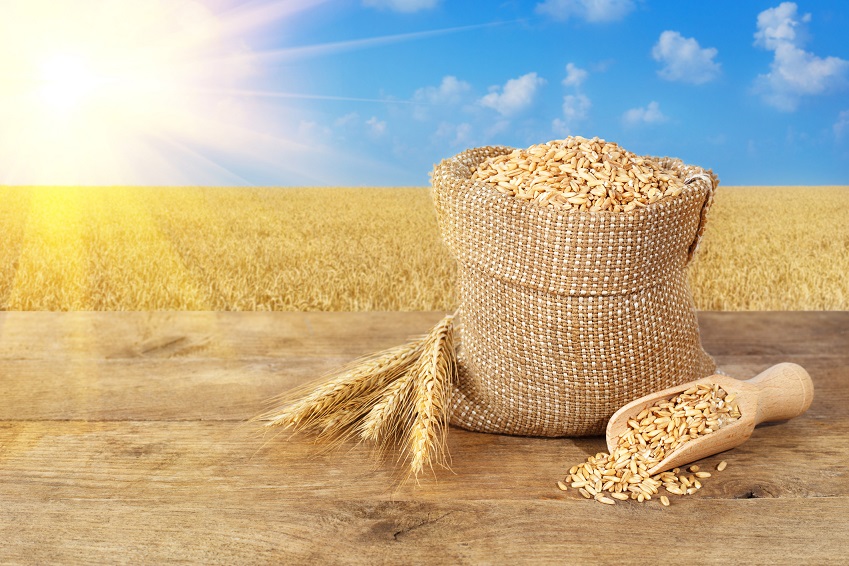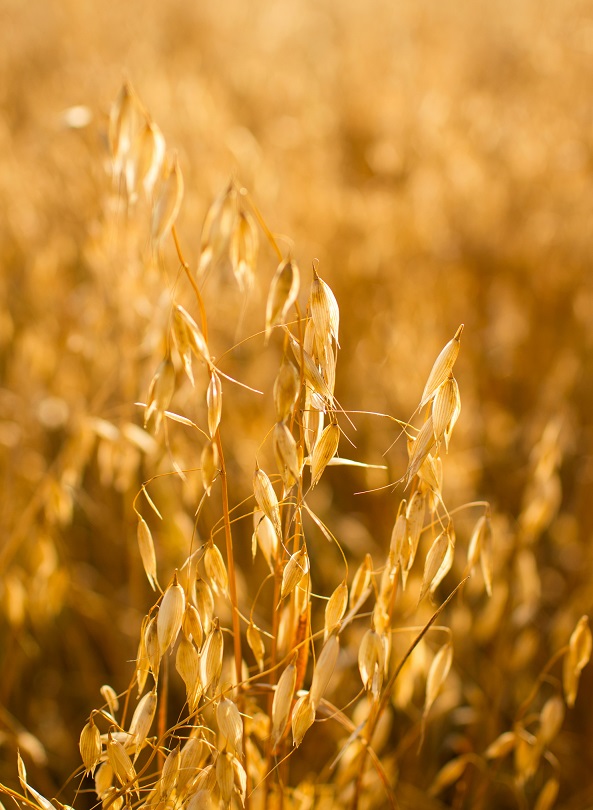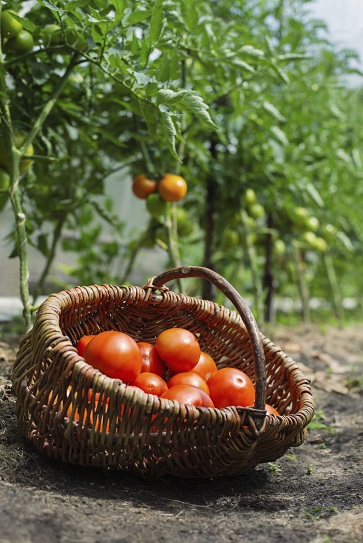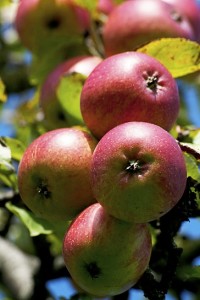 At first, oatmeal masks sound like your everyday home remedy.
At first, oatmeal masks sound like your everyday home remedy.
A homemade treatment passed down from your mother or an enthusiastic friend, which is completely unproven, but has huge potential given its health benefits as food. Oatmeal masks sounds like another banana peel, papaya or lemon juice.
Experimenting with home remedies is a great idea for acne. You might achieve nothing, but just last year, strawberries were discovered to have natural sunscreen properties, while cinnamon has completely unexpected collagen boosting powers.
As long as there’s no confirmed downside like with the deadly lemon juice, turning your face into your own science project is a great idea. If oatmeal masks were a random home remedy, I would urge experimentation…
…but oatmeal is really something else entirely. It wasn’t invented by a teenage beauty enthusiast three or four years ago. Oatmeal has been used since the days of conquering Roman soldiers 2000 years ago.
Beneath the home remedy surface, oatmeal is one of the best researched skin treatments of all time.
The lore of oatmeal
Unlike green tea or lavender oil, oatmeal is one of the oldest topical treatments known to mankind. Its usage dates back as far as salt baths and cinnamon, two of the very earliest natural remedies.
The oldest oat grains, whether cultivated or wild, were discovered in Egypt and dated back to 2000BC. The oldest oats which were confirmed to be cultivated dated back to the Bronze age (2000BC to 700BC) and were discovered in Switzerland. As for oatmeal face masks, numerous medicinal texts confirm that early physicians of the Roman Empire recommended it. Such physicians include Columella and Theophrastus, while Pliny claimed that oatmeal flour, cooked in vinegar, could eliminate many dermatological diseases.
Following the collapse of the empire, oats lay dormant for nearly two thousand years, but by the 1800s a London pharmacist called Henry Potter invented a tincture of oats called Potter’s Compound of Avena (scientific name for oats = avena sativa). For the next hundred years, oats were mostly available in pharmacies rather than as a breakfast staple. The best known health benefit of oats today is reducing cholesterol, but starting from the 1930s, oats were used widely as an antioxidant to prevent food spoilage.
Read Annihilate Your Acne – learn how to clear your skin permanently
The final surge in popularity (unless the Roman era repeats itself and a new dark age is unleashed) also arrived in the 1930s. Several studies revealed that oat masks could alleviate itching and irritation, and scientists quickly invented colloidal oatmeal, a finely powdered topical form. The first commercial colloidal oatmeal was released in 1945, and a surge in customers added it to bathtubs, make-up, and face washes. The only disaster was a raft of customers complaining of clogged drains from such a fine powder.
More and more benefits came to light, leading the FDA to classify oatmeal masks as “generally recognised as safe” by the late 1980s and by 2003, as an official skin protectant. Their definition of a skin protectant is this: “a drug product that temporarily protects injured or exposed skin or mucous membrane surfaces from harmful or annoying stimuli, and may help to provide relief to such surfaces“.
The FDA is NOT the ultimate acne authority – their website even denies that diet causes acne – but even they recognise the power of oatmeal masks.
It’s tempting to think that oatmeal is a fad; it sounds like a trick invented by a teenager in desperation. But no – it’s one of the oldest skincare remedies in existence. Honey and sulphur masks date back to Ancient Egypt, while the Romans were equally fond of crocodile oil from the recently conquered River Nile, but oatmeal is a storied remedy.
Oats contain rare anti-inflammatory compounds
If you refuse to use a topical treatment unless a study has directly confirmed it, it’s game over already: no study has proven that oatmeal can clear acne. What we do have is literally dozens of studies confirming oatmeal’s anti-inflammatory properties.
There’s so many studies on irritation and itching that the acne benefits might as well be proven. In the acne underground, a reduction in redness and swelling is the most common benefit from oats. Oatmeal is proven to inhibit numerous pro-inflammatory chemicals in the skin. For example, oats inhibit TNF-a and interleukin-8, two chemicals which both inflame pimples and create new ones. There’s dozens of immune system chemicals, but these two are actually proven to be found in higher amounts in acne prone-skin.
Oats inhibit NF-kappaB, a master regulator which controls numerous pro-inflammatory chemicals. Oatmeal masks also prevent the release of arachidonic acid from surrounding cells. Arachidonic acid is a fatty acid which is necessary for tissue repair, often being supplemented with by bodybuilders, but increases inflammation when out of control.
For acne itself, lowering inflammation is an oatmeal mask’s main prospective power. The question that lingered for decades was how. Explanations were plentiful; oatmeal contains a wide range of antioxidants including caffeic acid, vannilic acid, ferulic acid and coumaric acid. However, during the last decade, the anti-inflammatory miracle compounds were confirmed to be avenanthramides.
These rare molecules are a group of 40 polyphenol antioxidants which are found almost exclusively in oats. The main purpose of avenanthramides is preventing infection; like resveratrol from red wine, they are a phytoalexin with antimicrobial properties. For example, there’s a deadly plant pathogen called crown rust fungus which among grains, infects only oat crops. Symptoms include orange pustules on the plant which spread leaf to leaf, which interestingly, sounds similar to acne.
Recommended – 6 vitamins and minerals which could finally clear your acne
Farmers select crown rust fungus resistant oat crops, but scientists have discovered that the more crown rust fungus an oat plant is infected with, the more avenanthramides it generates. The outpouring of avenanthramides was later proven to restrict further infection…
…and these ancient and natural defences can help your acne too. It turns out that when applied to skin cells, avenanthramides are able to inhibit the exact same pro-inflammatory proteins that oatmeal can: IL-8, TNF-A, NF-kappaB, and arachidonic acid.
Avenanthramide concentrations as low as 1-3 parts per million are enough to lower inflammation; that’s pretty pleasant news seeing as oats contain 300 parts per million (0.03%). Avenanthramides can reduce irritation, itching, and countless inflammatory diseases. Avenanthramides also have antioxidant properties 10 to 30 times stronger other oatmeal polyphenols such as vanillin and caffeic acid.
Avenanthramides are heavily concentrated in the bran and outer kernel of the oats. Oats contain avenanthramides in average concentrations of 0.03%, but debranned oat flour contains just 0.003 to 0.008%, while bran-rich flour contains 0.01% to 0.04%. In other words, avenanthramides are only a minor component of oats, but their effects are enormous.
Avenanthramides are the main reason why oatmeal can calm acne. They are actually structurally related to the anti-allergy drug Tranilast; whether this is a coincidence is unknown. It’s telling that oat kernel ingredients in shampoos, soaps, and cosmetics feature standardised levels of avenanthramides now. Scientists are bunkered down in a lab as we speak trying to manufacture a synthetic version. Early reports claim that it’s as effective as the natural oat version, but why wait, when we already have oatmeal everywhere.
Weird but effective moisturising properties
 Countless natural moisturisers are available for acne today. Many of them, such as grapeseed oil or shea butter, function simply by feeding your skin cells with fatty acids they need, particularly commonly absent ones like linoleic acid. Sometimes they work by supplying ceramides, natural compounds in the skin which lock in moisture. But oatmeal is also a strong moisturiser. It’s not an oil, although oat oil is a separate topical treatment which many love. Instead, oatmeal is an occlusive moisturiser.
Countless natural moisturisers are available for acne today. Many of them, such as grapeseed oil or shea butter, function simply by feeding your skin cells with fatty acids they need, particularly commonly absent ones like linoleic acid. Sometimes they work by supplying ceramides, natural compounds in the skin which lock in moisture. But oatmeal is also a strong moisturiser. It’s not an oil, although oat oil is a separate topical treatment which many love. Instead, oatmeal is an occlusive moisturiser.
The key lies with colloidal oatmeal. Colloidal oatmeal differs from regular oatmeal with its small particle size. Colloidal oatmeal consists of whole oat grains ground into a powder. The fat content of this powder must be above 0.2%, and no more than 3% of the grains may exceed a particle size of 150um with no more than 15% being above 75um.
In its true form, colloidal oatmeal is extremely fine, and through this fineness, colloidal oatmeal can form a very consistent, imprenetable film when applied as a mask to the face.
Oatmeal acts as a highly viscous barrier that literally locks in water. Colloidal oatmeal decreases trans-epidermal water loss (TEWL), the loss of moisture through the outermost layer of the skin. Stratum corneum hydration increases, while the risk of dry skin and hence weak skin decreases. There’s even an added bonus of protection from external irritants.
That is the nature of an occlusive moisturiser. Occlusive moisturisers can have side effects too, such as blocking water loss when moisture is too high, thus allowing microorganisms to breed. They’re a blunter instrument than oils, but can be a treasure chest for people with chronically dry skin.
Here’s a small explanation of dry and flaky skin. Every skin cell in your face is bound to your skin by proteins named desmosomes. It’s unnecessary for dry and dead skin cells to remain on your skin, and therefore, your living skin cells produce several enzymes which degrade desmosomes, allowing the shedding of dead skin cells (technical name: desquamation).
7 natural topical treatments which can massively reduce acne
Genetic differences in these enzymes exist, and you can supply your own enzymes like papain from papaya, but hydration is key. When your stratum corneum loses moisture, when TEWL increases, enzyme production is inhibited and desmosome activity remains stubbornly high. Dead skin cells remain in place, and as they build up, the white flaky patches of skin which everybody fears slowly appear.
Occlusive moisturisers, including oatmeal, can prevent this. Oatmeal has unique properties; any old plant can be applied in a finely ground powder, but oatmeal is rich beta d-glucan. This natural compound is a polysaccharide which provide the cholesterol lowering benefits of oats, the benefits oatmeal boxes constantly mention.
Beta D-glucan has extremely powerful hydrophillic or water-binding properties. When combined with water, this massively increases the water-binding potential and viscosity of colloidal oatmeal itself, right down to the particle level. This makes oatmeal’s occlusive powers far more efficient than average. What’s more, the water-binding powers of beta D-glucan activate whilst on your skin, trapping yet more water within its layers.
Oatmeal is an unusual moisturiser, but a highly effective one. Experienced blotchy, red and inflamed acne from the chemical moisturisers in grocery stores? Colloidal oatmeal is an excellent natural alternative.
Dodgy food, great topical treatment
If you’ve read my eBook Annihilate Your Acne then you’ll know that oats are not the perfect food for acne – far from it. They might have the wholesome, heart-healthy breakfast reputation, and the weird idea that Scottish guys wearing kilts are strong and hardy because of eating oats every day. They’re much more acne-friendly than wheat or corn, but they’re too high in lectins, phytic acid and other antinutrients to feast on regularly.
The upside? None of those dangers have any effect when applied topically. Lectins wreak digestive havoc, while phytic acid binds to minerals in the small intestine. Other antinutrients in oats work by increasing inflammation in the body, but study after study has confirmed that when applied topically, oats are anti-inflammatory.
The only confirmed downside is that colloidal oatmeal can overload your skin’s moisture, if abused as an occlusive moisturiser. They can also stop your skin from breathing; never smear your whole body with colloidal oatmeal or you’ll end up like Jill Masterson. At a stretch, it’s possible that the antimicrobial avenanthramides could kill types of beneficial bacteria in your skin pores, but that’s just theoretical gibberish.
Read this article and learn why vitamin A is great for oily skin
Overall, we have tons of studies, and colloidal oatmeal is one of the safest natural topical treatments in existence. We have neither a reason to discard it nor any horror stories. Oatmeal joins grapeseed oil as a poor food for acne which is excellent when applied topically.
Of course, it also depends on which other topical treatments you combine oatmeal with.
The recommended recipes – reviewed
 The baseline recipe for colloidal oatmeal is to combine the fine powder with water, to allow the beta D-glucan to act. According to some, here are the possible next steps:
The baseline recipe for colloidal oatmeal is to combine the fine powder with water, to allow the beta D-glucan to act. According to some, here are the possible next steps:
Oatmeal and tomato – tomatoes are rich in carotenoid antioxidants like lycopene and moderately rich in vitamin C and A. There’s no property which counteracts oatmeal’s benefits. The problem is the mixture – how are you supposed to mix tomatoes into colloidal oatmeal? You’d need some colloidal tomatoes, to form a nice red paste, or spend hours mashing the tomatoes into as fine a paste as possible, unless you have a juicer.
A smarter strategy would be purchasing organic tomato juice. Organic juice products have a higher nutrition, and since tomato juice is thick, this would maintain the all-important viscosity of the oatmeal.
This recipe would be strong, since the lycopene in tomatoes penetrates the skin very effectively, and is very protective against UV radiation damage. The answer? If you live in a hot and sunny country, and have inflamed skin due to that sun, an oatmeal/tomato combo could be excellent. Their respective powers fit well together.
You would have to add small amounts of a carrier oil like grapeseed as well, since lycopene requires a fat for absorption into the skin. Therefore, the only downside of this recipe is hassle.
Oatmeal and baking soda – baking soda is one of the most overrated topical treatments of all time. It’s very easy to mix with colloidal oatmeal. Dissolve your baking soda in water, and use that water for your oatmeal base.
Baking soda also has strong antibacterial properties, which will decimate p.acnes bacteria. There will be no escape while the viscous layer of oatmeal traps the baking soda in. The problem is that baking soda is highly alkaline, and thus the enemy of proper skin barrier function, and there will be no escaping from that either.
Oatmeal and honey – the classic recipe! Honey’s main gimmick is its antibacterial properties and it reduces inflammation decently as well. You have to use raw honey, cloudy and unpasteurised honey, in order to obtain the benefits. Pasteurised honey is runnier, and hence would be easier to mix with the colloidal oatmeal, but you have no choice: pasteurised honey is useless. Raw honey is thicker but is still a consistent paste, making mixture easy. No corner of the internet is safe from this recipe, but it’s a strong one.
Oatmeal, honey and yogurt – the second most common recipe. The principles of honey remain, while the yogurt will add vitamin A, E and beneficial bacteria, if it’s natural, bio-live yogurt. The problem is that the honey might wipe out some of this bacteria. Using yogurt and oatmeal alone is smarter.
Unlike tomatoes, yoghurt contains its own fats, making it simpler because there’s no need to add an extra carrier oil. Greek natural yogurt is optimal, since its main feature is a higher fat content. Yogurt is extremely easy to mix in with the oatmeal and forms a nice pliable texture.
Oatmeal and avocado – difficult to mash up into a consistent paste. The mixture is very thick, and hard to mix with the water and oatmeal. Avocados are particularly rich in carotenoid antioxidants and the penetration will be automatically enhanced due to its fats. Avocados can also promote collagen formation when applied topically. The oil is too high in oleic acid, at 63%, but in diluted whole food form it will be safer. The problem remains with the mixture; overall, avocado and oatmeal mixtures are too inconvenient.
Oatmeal and banana – bananas are easy to create a consistent paste with, unlike tomatoes, and they’re fairly high in water. The problem is that they’re not the most nutritious fruit for acne, and the benefits they do have function inside the body, including their magnesium and ability to improve sleep and stress.
Why aloe vera is the nemesis of red and inflamed acne
Bananas contain some anti-inflammatory compounds like rutin and quercetin which will pile power on top of the oatmeal, but overall, many recipes are superior. This is purely based on science though: like any food, bananas could have undiscovered topical benefits.
 Oatmeal and apple – apples have the problems of tomatoes. You cannot easily turn them into a fine paste or powder. Apples are rich in antioxidants, but most are concentrated in the skin. Apple juice is not a solution this time, since it lacks the thickness of tomato juice.
Oatmeal and apple – apples have the problems of tomatoes. You cannot easily turn them into a fine paste or powder. Apples are rich in antioxidants, but most are concentrated in the skin. Apple juice is not a solution this time, since it lacks the thickness of tomato juice.
The real solution? As you pour your colloidal oatmeal, use apple juice instead of water. The water in the apple juice will vanish into the oatmeal: it needs water anyway. The antioxidants will also become part of the mixture.
Apples are an overrated food for health, lacking any unique powers, but they are decent and so is this recipe. The apple juice recipe is actually a variation you’ll find, but they might not mention replacing the water with it.
Oatmeal, watermelon and grapeseed oil – a recipe I have just invented based on the tomato science. Watermelon contains 1.5 times as much lycopene as tomatoes. The flesh contains next to no fiber and is easy to mash up finely. It’s also extremely high in water (an awe-inspiring discovery), at 92%, meaning that you can either use it as the water base or combine it with water.
Grapeseed oil will enhance the penetration of lycopene. If a tomato and oatmeal mixture does work for scorching sunlight, this mixture will be even better.
Like with sea salt, the recipes follow no logic whatsoever, but spread like an uncontrollable virus. Some are excellent and some are shocking – it’s down to luck. Any recipes not included here will follow the same pattern.
Stay on your toes, and avoid any recipes containing coconut oil, olive oil and lemon juice.
Conclusion
Oatmeal is one of the most surprisingly great topical treatments for acne. It’s not proven to clear acne, but it’s very close, given that inflammation is the main cause of it.
For inflammation, applying colloidal oatmeal overnight for a week will be enough to notice the difference. By inhibiting pro-inflammatory chemicals, the avenanthramides should quickly lower existing swelling and inflammation, while the chain of events leading to new pimples will be disrupted. What isn’t known is precisely how avenanthramides inhibit TNF-A, IL-8, and its partners in crime, so the process could even take up to two weeks. If you want to experiment with oatmeal, giving up after 3 days would not be smart.
The moisturising properties rely on brute strength, literally locking the moisture in a cage. Do NOT use colloidal oatmeal all night and day. Overnight will be sufficient. You need to give your skin time to breath. If you suffer from chronically dry and flaky skin then combine this with a natural oil like tamanu oil.
An excellent bulk colloidal oatmeal product is this 2 pound bag of Traverse Bay Colloidal Oatmeal. The instructions tell you to add it to baths, but the choice is yours.
Colloidal oatmeal joins cinnamon and turmeric as a home remedy which has some real evidence behind it.
NEXT: forget creams and moisturisers – discover the ultimate acne-clearing diet
Thanks for reading!
Is there any way to make the oats safe to eat? Like with ginger/ cinnamon/ raspberries? Because we kind of have to eat something. We can’t just apply food to our face all the time, even if we had no acne at all.
They are safe to eat, just not in heavy amounts daily. There’s no food which which you can add and eliminate the lectins, but keep lectins low elsewhere and you can have oats every other day. The avenanthramides will lower inflammation when eaten as well. Like the article said, oats are nowhere near as bad as wheat or corn. PS: Yes, you have to eat, but oats are neither necessary nor unique in the diet; all the benefits are available elsewhere.